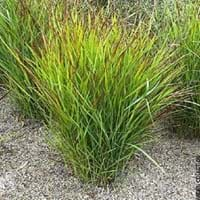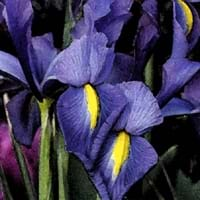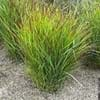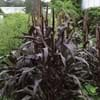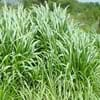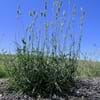Life Span
Perennial
Perennial
Type
Grass
Herbaceous Perennial
Origin
Mexico, South-Central United States, Southeastern United States
Hybrid origin
Types
Dallas Blues grass, Rotstrahlbush grass
Not Available
Number of Varieties
Not Available
Habitat
Prairies, Roadsides, Warmer regions
meadows, Riverbanks, Rocky Mountains
USDA Hardiness Zone
4-10
5-9
Sunset Zone
4, 5, 6, 7, 8, 9, 10, 11, 12, 13, 14, 15, 16, 17, 18, 19, 20, 21, 22, 23, 24
2b, 3a, 3b, 4, 5, 6, 7, 8, 9, 10, 11, 12, 13, 14, 15, 16, 17, 18, 19, 20, 21, 22, 23, 24
Habit
Clump-Forming
Clump-Forming
Flower Color
Pink
White, Yellow, Blue, Purple, Orange, Pink, Rose, Coral, Peach, Burgundy, Lavender, Plum, Orange Red, Dark Salmon, Bronze, Chocolate, Black
Flower Color Modifier
Bicolor
Bicolor
Fruit Color
Non Fruiting Plant
Not Available
Leaf Color in Spring
Green, Dark Green
Green, Light Green, Gray Green
Leaf Color in Summer
Light Green
Yellow green
Leaf Color in Fall
Green, Dark Green, Brown
Not Available
Leaf Color in Winter
Tan, Brown
Light Green
Leaf Shape
Grass like
Sword-like
Plant Season
Spring, Summer, Fall, Winter
Spring
Sunlight
Full Sun, Partial Sun
Full Sun, Partial Sun
Growth Rate
Medium
Medium
Type of Soil
Clay, Loam, Sand
Clay, Loam, Sand
The pH of Soil
Acidic, Neutral, Alkaline
Acidic, Neutral, Alkaline
Soil Drainage
Well drained
Well drained
Bloom Time
Late Summer, Early Fall, Fall
Early Spring, Spring, Late Spring
Where to Plant?
Ground
Ground
How to Plant?
Divison, Seedlings
Root Plants
Plant Maintenance
Low
Medium
Watering Requirements
Water frequently while growing, Water more frequently during periods of extreme drought
Average Water Needs
In Summer
Lots of watering
Lots of watering
In Spring
Moderate
Moderate
In Winter
Average Water
Average Water
Soil pH
Acidic, Neutral, Alkaline
Acidic, Neutral, Alkaline
Soil Type
Clay, Loam, Sand
Clay, Loam, Sand
Soil Drainage Capacity
Well drained
Well drained
Sun Exposure
Full Sun, Partial Sun
Full Sun, Partial Sun
Pruning
Prune when plant is dormant, Remove dead or diseased plant parts
Remove damaged leaves, Remove dead branches, Remove dead leaves
Fertilizers
No fertilizers needed
All-Purpose Liquid Fertilizer
Pests and Diseases
Aphids, Ladybug
Bacteria, fungus, Viruses
Plant Tolerance
Drought
Drought
Flower Petal Number
Single
Single
Foliage Texture
Fine
Fine
Foliage Sheen
Matte
Matte
Attracts
Ladybug beetles
Butterflies, Hummingbirds
Allergy
Not Available
Not Available
Aesthetic Uses
Showy Purposes
Beautification, Showy Purposes
Beauty Benefits
Not Available
Not Available
Environmental Uses
Air purification, Shelter for wildlife
Air purification
Medicinal Uses
No Medicinal Use
Not Available
Part of Plant Used
Whole plant
Flowers, Root
Other Uses
Used as Ornamental plant
Basketary, Used for fragrance
Used As Indoor Plant
No
No
Used As Outdoor Plant
Yes
Yes
Garden Design
Dried Flower / Everlasting, Container, Edging, Feature Plant, Mixed Border, Rock Garden / Wall
Cutflower, Foundation, Mixed Border, Rock Garden, Wall
Botanical Name
Panicum virgatum
IRIS 'Apollo'
Common Name
Shenandoah grass, switchgrass
Carmen Iris, Dutch Iris
In Hindi
Shenandoah grass
Dutch Iris
In German
Shenandoah grass
Dutch Iris
In French
Shenandoah grass
Dutch Iris
In Spanish
Shenandoah grass
Dutch Iris
In Greek
Shenandoah grass
Dutch Iris
In Portuguese
Shenandoah grass
Dutch Iris
In Polish
Shenandoah grass
Dutch Iris
In Latin
Shenandoah grass
Dutch Iris
Phylum
Magnoliophyta
Magnoliophyta
Class
Liliopsida
Magnoliopsida
Order
Cyperales
Asparagales
Clade
Angiosperms, Commelinids, Monocots
Angiosperms, Monocots
Tribe
Not Available
Irideae
Subfamily
Not Available
Iridoideae
Number of Species
Not Available
Season and Care of Shenandoah Grass and Dutch Iris
Season and care of Shenandoah Grass and Dutch Iris is important to know. While considering everything about Shenandoah Grass and Dutch Iris Care, growing season is an essential factor. Shenandoah Grass season is Spring, Summer, Fall and Winter and Dutch Iris season is Spring, Summer, Fall and Winter. The type of soil for Shenandoah Grass is Clay, Loam, Sand and for Dutch Iris is Clay, Loam, Sand while the PH of soil for Shenandoah Grass is Acidic, Neutral, Alkaline and for Dutch Iris is Acidic, Neutral, Alkaline.
Shenandoah Grass and Dutch Iris Physical Information
Shenandoah Grass and Dutch Iris physical information is very important for comparison. Shenandoah Grass height is 60.00 cm and width 30.00 cm whereas Dutch Iris height is 25.40 cm and width 12.70 cm. The color specification of Shenandoah Grass and Dutch Iris are as follows:
Shenandoah Grass flower color: Pink
Shenandoah Grass leaf color: Green and Dark Green
Dutch Iris flower color: White, Yellow, Blue, Purple, Orange, Pink, Rose, Coral, Peach, Burgundy, Lavender, Plum, Orange Red, Dark Salmon, Bronze, Chocolate and Black
- Dutch Iris leaf color: Green, Light Green and Gray Green
Care of Shenandoah Grass and Dutch Iris
Care of Shenandoah Grass and Dutch Iris include pruning, fertilizers, watering etc. Shenandoah Grass pruning is done Prune when plant is dormant and Remove dead or diseased plant parts and Dutch Iris pruning is done Remove damaged leaves, Remove dead branches and Remove dead leaves. In summer Shenandoah Grass needs Lots of watering and in winter, it needs Average Water. Whereas, in summer Dutch Iris needs Lots of watering and in winter, it needs Average Water.
